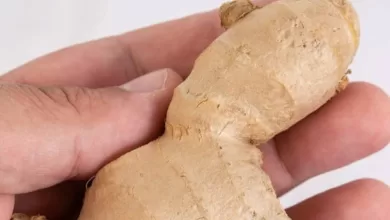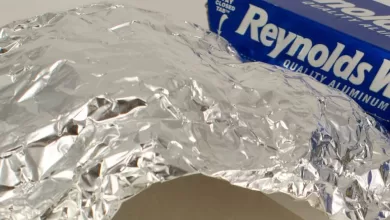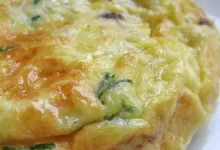What is the best way to cook pork chops without drying them out?
Sharing is caring!
Cooking pork chops to perfection can be a culinary challenge, especially when the fear of ending up with dry, tough meat looms overhead. The quest for juicy, tender pork chops has led many home cooks and chefs alike to experiment with various cooking methods and techniques. Fortunately, achieving succulent pork chops is not an insurmountable task. By understanding the science behind meat moisture retention and mastering the art of cooking, you can savor mouthwatering pork chops every time you prepare them.
The key to cooking pork chops that are both flavorful and moist lies in the application of appropriate cooking techniques and methods. Dry pork chops can be a result of improper cooking practices that cause the meat to lose its natural juices. However, armed with the right knowledge, you can ensure that your pork chops are a delectable delight rather than a disappointing disaster.
In this article, we will delve into the world of pork chop perfection, exploring a variety of methods that promise to banish dryness and elevate your culinary prowess. We’ll cover everything from selecting the right cut of pork and the science behind brining, to the benefits of sous vide cooking and the final steps for serving a masterpiece on your plate. By following these expert tips and tricks, you’ll not only learn how to prevent your pork chops from drying out but also how to create a symphony of flavors that will leave your taste buds singing.
So, whether you’re planning an intimate dinner for two or a feast for the whole family, join us on this culinary journey as we unravel the mysteries of cooking pork chops to perfection. Get ready to transform your kitchen into a haven of irresistible aromas and delectable dishes that will have everyone asking for seconds. It’s time to bid adieu to dry pork chops and welcome a new era of culinary excellence.
I. Selecting the Right Cut of Pork

The foundation of a perfectly cooked pork chop starts with selecting the right cut of meat. Not all pork chops are created equal, and choosing the appropriate cut can make a significant difference in the final outcome of your dish.
When it comes to pork chops, there are various cuts available, each with its own characteristics and qualities. The two primary cuts you’ll encounter are bone-in and boneless pork chops. Bone-in chops tend to retain moisture better during cooking due to the presence of the bone, resulting in juicier meat. On the other hand, boneless chops offer convenience and can be easier to cook evenly.
Another factor to consider is the thickness of the chop. Thicker cuts are more forgiving during cooking, as they have a lower risk of overcooking and drying out. Thinner chops, while quicker to cook, require a vigilant approach to prevent them from becoming dry and tough.
Additionally, the marbling—the small streaks of fat within the meat—plays a crucial role in the final texture and flavor of the pork chop. More marbling generally means a juicier and more flavorful result. Leaner cuts, while healthier, can be prone to drying out if not handled properly.
Ultimately, the choice of cut depends on your preferences and the cooking method you intend to use. Bone-in, thick cuts with good marbling are often recommended for beginners, as they are more forgiving and offer better chances of success. However, if you’re confident in your cooking skills, experimenting with different cuts can lead to delightful discoveries.
In the next sections, we will explore how to enhance the moisture and flavor of your chosen pork chop cut through techniques such as brining, marinating, and precise cooking methods. Remember, the journey to succulent pork chops starts with the careful selection of the right cut, setting the stage for a culinary masterpiece.
II. Brining: The Secret to Juicy Pork Chops

One of the most effective techniques for ensuring juicy and flavorful pork chops is brining. Brining involves soaking the meat in a solution of water, salt, sugar, and often additional flavorings for a designated period of time before cooking. This process not only enhances the pork chop’s moisture retention but also infuses it with delightful flavors.
Brining works by allowing the meat to absorb the brine solution, which helps break down its muscle fibers and opens up space for the liquid to be absorbed. This extra moisture gets trapped during the cooking process, resulting in meat that is more resistant to drying out.
To create a basic brine, combine water, salt, and sugar in a container, and let the pork chops soak in the solution for several hours. The salt in the brine not only seasons the meat but also alters its protein structure, allowing it to hold more water. Sugar can balance the saltiness and contribute to the overall flavor profile.
Experimentation with brine ingredients can lead to exciting variations. You can incorporate aromatic herbs, spices, citrus zest, or even garlic to infuse unique flavors into the meat. Keep in mind that brining time should be adjusted based on the thickness of the chops; thicker cuts may require longer brining periods.
However, caution is necessary, as over-brining can lead to excessively salty meat. Finding the right balance between flavor infusion and salt content is essential.
Before brining, ensure that the pork chops are properly thawed (if frozen) and that you’re using a non-reactive container for the brine. After brining, rinse the chops to remove excess salt from the surface and pat them dry before cooking.
In the subsequent sections, we’ll explore other methods of keeping pork chops juicy, such as marinating and cooking techniques. By mastering the art of brining and incorporating it into your culinary repertoire, you’ll be well on your way to creating pork chops that are moist, flavorful, and utterly irresistible.
III. Marinating for Flavor and Moisture

Marinating is a culinary technique that not only imparts exceptional flavor to pork chops but also contributes to their juiciness. By infusing the meat with a well-crafted marinade, you can elevate the taste profile while ensuring that every bite remains succulent and tender.
Marinades typically consist of a combination of acidic ingredients (such as vinegar, citrus juices, or yogurt) along with oil and an array of herbs, spices, and seasonings. The acid in the marinade helps to break down the muscle fibers of the meat, making it more receptive to absorbing both the flavors and the moisture from the marinade.
When marinating pork chops, there are a few important considerations to keep in mind. First, marinating time matters. While shorter marinating times of 30 minutes to 2 hours can enhance flavor, longer durations can contribute to greater moisture retention. However, marinating for extended periods, such as overnight, should be done with caution, as the acidic components can lead to a change in the meat’s texture if left too long.
Another key point is to prevent cross-contamination and ensure food safety. Always marinate in a sealed, non-reactive container in the refrigerator, and never reuse marinade that has come into contact with raw meat.
To marinate pork chops effectively, place them in a zip-top bag or a shallow dish, pour the marinade over them, and evenly distribute the marinade by turning the chops a few times. You can experiment with various ingredients to create marinades that suit your taste preferences, whether it’s a zesty citrus-infused marinade or a savory herb and garlic blend.
As you explore the world of marinating, remember that balance is key. While acids tenderize the meat, they can also toughen it if overused. Pairing the right ingredients and respecting marinating times will lead to pork chops that are not only incredibly moist and flavorful but also safe to consume.
In the upcoming sections, we’ll delve into cooking techniques that further complement the efforts of brining and marinating, all working together to ensure your pork chops remain a culinary triumph.
IV. Searing to Lock in Juices

Searing is a crucial step in the cooking process that plays a pivotal role in preserving the juiciness of pork chops. This technique involves quickly cooking the chops at high heat to create a flavorful crust on the outside while sealing in the natural juices within the meat.
When pork chops are seared, the high heat causes the proteins on the surface of the meat to undergo the Maillard reaction—a complex chemical process that results in the browning and development of rich, savory flavors. This flavorful crust not only adds taste but also acts as a barrier, preventing excessive moisture loss during subsequent cooking methods.
To achieve a perfect sear, start by patting the pork chops dry with paper towels. Moisture on the surface can hinder browning, so ensuring the chops are as dry as possible is essential. Preheat a heavy skillet or pan over medium-high heat and add a small amount of oil with a high smoke point, such as vegetable or canola oil. Once the oil shimmers and is hot but not smoking, carefully place the pork chops in the pan.
Allow the chops to sear undisturbed for a few minutes on each side, resisting the urge to move them around too much. This allows the surface to develop that desirable crust. Once the chops are golden brown on one side, flip them to sear the other side. Depending on the thickness of the chops, searing might take around 2-4 minutes per side.
Remember, the goal is to create a flavorful exterior while maintaining the juiciness within. Once the chops are seared to perfection, you can proceed with your chosen cooking method, whether it’s baking, pan-roasting, or grilling.
Searing isn’t just about aesthetics; it’s about enhancing the overall dining experience. The Maillard reaction creates complex aromas and tastes that make every bite a delight. Combined with the techniques we’ve explored so far, searing ensures that your pork chops remain moist, succulent, and bursting with flavor. In the upcoming sections, we’ll uncover additional cooking methods that contribute to the art of perfect pork chop preparation.
V. Baking: A Gentle Cooking Method

Baking is a gentle and consistent cooking method that can yield juicy and perfectly cooked pork chops. This method is particularly useful for those who prefer a hands-off approach, as it allows you to focus on other aspects of your meal preparation while the oven does the work.
To ensure moist and flavorful baked pork chops, there are a few key steps to follow. Begin by preheating your oven to the recommended temperature, usually around 350°F (175°C) to 400°F (200°C). While the oven heats up, you can enhance the pork chops’ moisture and flavor by incorporating techniques such as brining or marinating, as discussed earlier.
Place the pork chops on a baking sheet or in a baking dish. You can line the baking sheet with parchment paper or aluminum foil to help with cleanup. If desired, you can brush the chops with a thin layer of oil to promote browning and prevent sticking.
Baking time varies depending on the thickness of the pork chops. As a general guideline, boneless chops typically take around 15-20 minutes, while bone-in chops may require 20-30 minutes. To ensure accurate cooking, it’s a good practice to use an instant-read meat thermometer. Insert the thermometer into the thickest part of the chop, avoiding contact with bone, and cook until the internal temperature reaches a safe 145°F (63°C).
During baking, it’s important to avoid overcooking, as this can lead to dryness. Overcooked pork chops can lose their tenderness and become tough. To retain moisture, consider covering the chops loosely with aluminum foil during the initial part of the baking process, then removing the foil for the final few minutes to allow the exterior to brown.
Baking offers a forgiving cooking environment, making it a great choice for beginners and those looking for a consistent method to achieve succulent pork chops. When combined with brining, marinating, and other techniques, baking contributes to the creation of a memorable and delicious pork chop experience. In the following sections, we’ll explore more advanced cooking techniques that further elevate the art of cooking pork chops to perfection.
VI. The Benefits of Sous Vide Cooking

Sous vide cooking has gained popularity among home cooks and professional chefs for its unparalleled ability to deliver precise and consistently juicy results. This innovative technique involves vacuum-sealing pork chops in a bag and cooking them in a water bath at a controlled, low temperature for an extended period of time.
The magic of sous vide lies in its ability to cook the pork chops evenly throughout, while minimizing moisture loss. By cooking the chops in a sealed environment, the natural juices and flavors are retained, resulting in pork that is tender, succulent, and bursting with taste.
To start, season the pork chops with your desired herbs, spices, and aromatics. Place the seasoned chops in a vacuum-sealable bag and seal the bag using a vacuum sealer or the water displacement method. Next, immerse the sealed bag in a water bath set to the precise temperature you desire for your desired level of doneness. This temperature is typically lower than traditional cooking methods, such as 130°F (54°C) for medium-rare.
Sous vide cooking times are longer than conventional methods, ranging from 1 to 4 hours or more, depending on the thickness of the chops and the desired result. The prolonged cooking time allows the collagen in the meat to break down gradually, resulting in a luxurious tenderness.
Once the pork chops have finished cooking, a quick sear in a hot skillet or on a grill is recommended to achieve a desirable outer crust and enhance the flavor. The sear takes only a minute or two on each side, ensuring that the moisture retained during the sous vide process remains locked in.
Sous vide cooking may require specialized equipment, such as a sous vide immersion circulator, but its advantages in achieving consistently moist and tender pork chops are well worth the investment for many. By utilizing this modern culinary technique in your kitchen, you’ll be able to create restaurant-quality pork chops that are sure to impress even the most discerning palates. In the forthcoming sections, we’ll explore more traditional cooking methods that can also lead to pork chop perfection.
VII. Pan Roasting for Perfect Pork Chops

Pan roasting is a versatile cooking method that combines the best of both worlds: the searing technique we’ve discussed earlier and the gentle, controlled heat of baking. This method allows you to achieve a crispy and flavorful outer layer while maintaining the pork chops’ internal moisture and tenderness.
To pan roast pork chops, start by selecting a heavy-bottomed oven-safe skillet that can go from stovetop to oven. Preheat the oven to a moderate temperature, around 375°F (190°C). This will allow for a gentle roast that doesn’t compromise the pork’s juiciness.
Begin by seasoning the pork chops with your preferred herbs, spices, and seasonings. Heat the skillet over medium-high heat and add a small amount of oil. Once the oil is shimmering, carefully add the pork chops to the skillet. Allow them to sear for a few minutes on each side until they develop a golden-brown crust. This initial searing step is crucial for locking in the juices.
Once the chops are seared, transfer the skillet to the preheated oven. This transition from stovetop to oven ensures even cooking, preventing the chops from overcooking on the outside while remaining undercooked within. The oven’s gentle heat continues to cook the pork chops to the desired internal temperature, which can be monitored using a meat thermometer.
Basting the pork chops with any pan drippings or a flavorful liquid, such as broth or wine, during the roasting process can further enhance their succulence. The basting helps to distribute moisture and flavor while preventing the meat from drying out.
After achieving the desired internal temperature, usually around 145°F (63°C), remove the skillet from the oven and let the pork chops rest for a few minutes before serving. This resting period allows the juices to redistribute throughout the meat, resulting in an exceptionally moist and tender texture.
Pan roasting showcases the importance of technique in achieving perfect pork chops. By mastering the art of combining searing with gentle roasting, you can create an impressive dish that delivers on both flavor and juiciness. In the upcoming sections, we’ll explore additional cooking methods that will further enrich your pork chop repertoire.
VIII. Utilizing a Meat Thermometer for Accurate Cooking

Achieving pork chops that are consistently juicy and perfectly cooked requires precision, and one indispensable tool in your culinary arsenal is a meat thermometer. This device takes the guesswork out of cooking, allowing you to monitor the internal temperature of the pork chops and ensure they reach the desired level of doneness without overcooking.
When it comes to using a meat thermometer for pork chops, the key is to insert the probe into the thickest part of the meat, avoiding contact with bones or fat. The temperature you’re aiming for depends on your preferred level of doneness. For a tender and slightly pink interior, an internal temperature of 145°F (63°C) is recommended. Keep in mind that the pork chops will continue to cook slightly as they rest, a process known as carryover cooking.
Using a meat thermometer not only helps you achieve the perfect level of doneness but also prevents the risk of undercooking, which can compromise food safety. Pork should never be consumed raw or undercooked due to the potential presence of harmful bacteria.
Different types of meat thermometers are available, including instant-read and leave-in models. Instant-read thermometers are perfect for checking the temperature quickly, while leave-in thermometers can be used throughout the cooking process, especially for methods like roasting or grilling.
As you cook pork chops using various methods like baking, pan roasting, or grilling, rely on your meat thermometer to guide you. This tool empowers you to create consistently exceptional results, whether you’re catering to guests or enjoying a meal with your family.
With a meat thermometer in hand, you can approach cooking pork chops with confidence, knowing that the days of dry and overcooked meat are behind you. This precision-driven approach, combined with the techniques we’ve explored earlier, guarantees that your pork chops will be a mouthwatering masterpiece. In the upcoming sections, we’ll delve into the final steps that wrap up your journey to pork chop perfection.
IX. Resting and Serving: Final Steps for Succulent Pork Chops

The journey to preparing succulent pork chops doesn’t end when they come off the heat. The final steps of resting and serving are just as crucial in maintaining their juiciness and ensuring a memorable dining experience.
After cooking your pork chops using techniques such as baking, pan roasting, or grilling, it’s essential to allow them to rest before cutting into them. Resting allows the juices that have accumulated near the surface of the meat during cooking to redistribute throughout the chop. This process ensures that each bite is moist and flavorful, rather than having the juices spill out onto the plate.
To rest the pork chops, transfer them to a clean plate or cutting board, and loosely tent them with aluminum foil. This covering helps to retain warmth and prevents the chops from cooling too rapidly. The resting period typically lasts for about 5 to 10 minutes, though thicker cuts may require a bit more time.
During this rest, take the opportunity to prepare any accompanying sides, sauces, or garnishes that will complement the pork chops. This planning ensures that your meal is ready to be plated and enjoyed as soon as the resting period is over.
When it’s time to serve, cut into the pork chops and savor the fruits of your labor. You’ll find that the rest has allowed the juices to redistribute evenly, resulting in a tender and succulent texture. Pair the pork chops with your chosen sides and sauces, and delight in the symphony of flavors you’ve created.
By emphasizing the importance of resting and serving, you complete the journey to perfect pork chops. This final touch showcases your attention to detail and dedication to culinary excellence. With each tender, flavorful bite, you’ll be reminded of the transformative power of mastering cooking techniques and applying them with care.
As we conclude this exploration of cooking techniques for juicy pork chops, remember that achieving excellence in the kitchen is a combination of art and science. Armed with knowledge and practice, you can confidently prepare pork chops that consistently impress, leaving both your palate and your guests thoroughly satisfied.
Sharing is caring!







